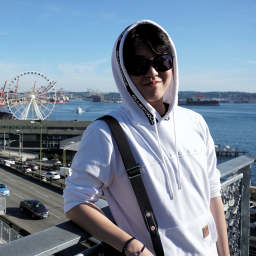Hydejack Post Writing Tips & Tricks
List of useful syntaxes you may find interesting when you write your own Jekyll posts.
If you are interested in more syntax guides, please visit Kramdown Syntax & Hydejack Writing documentations.
Build
bundle update
# livereload option enables auto-reload of the browser when a file has been modified.
bundle exec jekyll serve --livereload
# if 'bundle exec' fails with ruby >= 3.0.0;
# https://github.com/jekyll/jekyll/issues/8523#issuecomment-751409319
bundle add webrick
Writing
Adding a table of contents
* this unordered seed list will be replaced by the toc
{:toc}
1. this ordered seed list will be replaced by the toc
{:toc}
Adding notes
You can add a note by adding the note class to a paragraph.
Example:
You can add a note.
Markdown:
You can add a note.
{:.note}
Edit the note key in _data/strings.yml to change the wording of the default label. To add a note with a specific label, add a title attribute:
A custom label.
{:.note title="Attention"}
A custom label.
Footnotes
Example:
This is a text with a footnote1.
Markdown:
This is a text with a footnote[^1].
[^1]: Your footnote text.
Can have multiple lines...
...and multiple paragraphs.
Can contain *Markdown*.
Links
Example:
A link to the kramdown homepage.
Another link to the kramdown homepage.
[Third link][kramdown] to the homepage.
Markdown:
A [link](http://kramdown.gettalong.org) to the kramdown homepage.<br>
[Another link] to the kramdown homepage.<br>
[Third link][kramdown] to the homepage.
[Another link]: http://kramdown.gettalong.org
[Third Link]: http://kramdown.gettalong.org "Another link with title modified"
Abbreviation
Example:
OMG is an abbreviated word.
Markdown:
OMG is an abbreviated word.
*[OMG]: Oh My God
Expand/Collapse
You can add expand/collapse contents with simple HTML.
<div markdown="1"> allows to use markdown features within.
Example: Hello World!Expand/Collapse Button
emphasized by markdown.
Markdown:
<details>
<summary>Expand/Collapse Button</summary>
<div markdown="1">
**Hello World!**<br>
emphasized by *markdown*.
</div>
</details>
Adding large text
You can add large text by adding the lead class to the paragraph.
Example:
You can add large text.
Markdown:
You can add large text.
{:.lead}
Center image
This requires extra modification to the Hydejack Theme.
Check the below post for more information.
Continue with How to Center an Image in Markdown
Example:
Markdown:
* With CSS class installed
{:.centered}
* Pure inline attribute used
{:style="display:block; margin-left:auto; margin-right:auto"}
Centering Multiple Image
Example:
Markdown:
* With CSS class installed
{:.text-align-center}


* Pure inline attribute used
{:style="text-align:center;"}


Changing image size
You can change the image size by adding CSS style to the paragraph after the image:
Example:
Markdown:
{: width="400" height="50"}
Adding image captions
You can add captions to large images/tables/code block by adding the figcaption class to the paragraph after the image:
Example:
An optional caption for an image.
Markdown:
{:.lead width="800" height="100" loading="lazy"}
A caption for an image.
{:.figcaption}
Adding large quotes
You can make a quote “pop-out” by adding the lead class.
Example:
You can make a quote “pop-out”.
Markdown:
> You can make a quote "pop-out".
{:.lead}
Adding faded text
You can gray out text by adding the faded class. Use this sparingly and for information that is not essential, as it is more difficult to read.
Example:
I’m faded, faded, faded.
Markdown:
I'm faded, faded, faded.
{:.faded}
Small tables
If a table is small enough to fit the screen even on small screens, you can add the stretch-table class to force a table to use the entire available content width. Note that stretched tables can no longer be scrolled.
| Default aligned | Left aligned | Center aligned | Right aligned |
|---|---|---|---|
| First body part | Second cell | Third cell | fourth cell |
An optional caption for a table
You can add the stretch-table class to a markdown table by putting {:.stretch-table} inline directly below the table.
Markdown:
| Default aligned |Left aligned| Center aligned | Right aligned |
|-----------------|:-----------|:---------------:|---------------:|
| First body part |Second cell | Third cell | fourth cell |
{:.stretch-table}
Your footnote text. Can have multiple lines…
…and multiple paragraphs. Can contain Markdown. ↩︎
